Welcome to Animals and Wildlife In New York.
The state of New York and New York City are one of the most popular destinations for tourists and the hub of many economic and foreign interests worldwide. New York is hardly a place where one would expect to find animals and wildlife.
What people often misconceive about New York is that it goes beyond the massive city and that infamous skyline… It leads to more nature the further inland you go, and it can be deceivingly dense in wildlife- even in that big city!
Use the headings below to move to a topic of interest for you; otherwise, read the entire blog and let us know what you think in the comment section!
Key Points
| Topic | Key Points |
|---|---|
| Coyotes in New York State | – Coyotes present since at least 1920 |
| – Controversy over their impact on deer hunting and livestock industry | |
| – Eastern coyotes larger than western cousin | |
| – Varying coat colors, distinctive characteristics | |
| – Breeding in February, average litter size 5-6 | |
| – Abundant throughout New York except Long Island and NYC | |
| Seals, Dolphins, and Porpoises | – Seals found on New York shores, highest concentration in April |
| – Multiple seal species seen, including harbor, gray, harp seals | |
| – Bottlenose dolphins, common dolphins, pilot whales, Risso’s dolphins off Long Island | |
| – Harbor porpoises in local waters | |
| Raccoons | – Adaptable and widespread mammals |
| – Feed mainly at night on various foods | |
| – Densities vary widely in different habitats | |
| Black Bears | – Black bears present in NY, valued by hunters and wildlife enthusiasts |
| – Population estimated at 6,000-8,000 bears in open hunting areas | |
| – Occur in various regions, including Adirondacks, Catskills, and more | |
| – Bears essential component of ecosystem, human-bear conflict concerns | |
| Moose | – Largest land mammal in NY, found in Adirondacks and Taconic Highlands |
| – Moose primarily browsers, feed on leaves, twigs, aquatic plants | |
| – Habitat consists of mixed forest, open areas, wetlands | |
| – Mortality factors: predators, parasites, vehicle collisions |
Coyotes in New York State
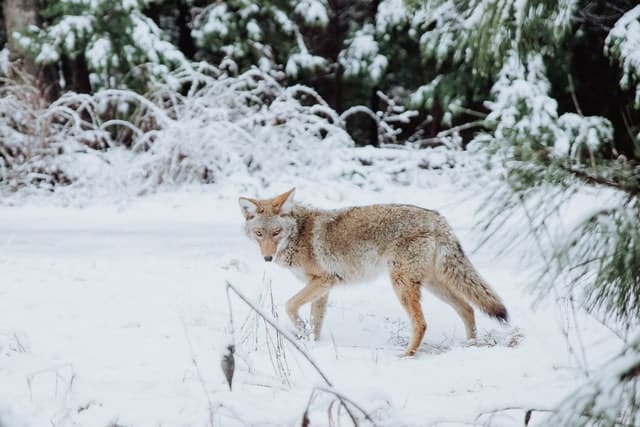
The presence of coyotes in New York state dates back to at least 1920, and for a more comprehensive exploration of New York’s urban coyote population, readers are encouraged to explore our dedicated article.
Similar to their western counterparts, eastern coyotes have sparked controversy and curiosity. Deer hunters perceive them as competitors and threats, while others argue that coyotes primarily rely on smaller mammals and carrion for sustenance. Concerns have also been raised about potential impacts on the livestock industry, particularly in sheepherding areas. Recent, albeit unsuccessful, efforts have been made to remove protection from coyotes, and in some cases, bounties have been proposed to reduce their numbers.
Eastern coyotes are notably larger than their southwestern counterparts, with some individuals reaching sizes comparable to smaller timber wolves. Adult weights typically range from 35 to 45 pounds, while large males may exceed 50 or 60 pounds. Eastern coyotes exhibit a German shepherd-like appearance, often grizzled gray on their back, upper sides, and neck, distinguishing them from most dogs that are usually of a solid color.
While the majority are typically colored, some eastern coyotes may display black or reddish-blond fur, with the latter being the more common variation. One key distinguishing feature is their habit of carrying their tail at or below a horizontal level when traveling, setting them apart from most dogs. Although telling coyotes apart from wolves at a distance can be challenging, up-close observations reveal differences in head size, muzzle and ear shape, and foot size.
Coyotes in New York, particularly in areas with well-fed populations or lower overall numbers, tend to have larger litters. This reproductive strategy makes it challenging to achieve significant reductions in their numbers. Scientific studies suggest that removing nearly 70 percent of the coyote population each year would be required to achieve sustained population reduction.
Coyotes are firmly established throughout all counties in New York except for Long Island and New York City. The estimated population of coyotes in the state ranges between 20,000 and 30,000, indicating their abundance. As with most wildlife populations, the numbers of coyotes will naturally fluctuate based on changes in food availability, weather conditions, and disease prevalence.
Seals, Dolphins, and Porpoises
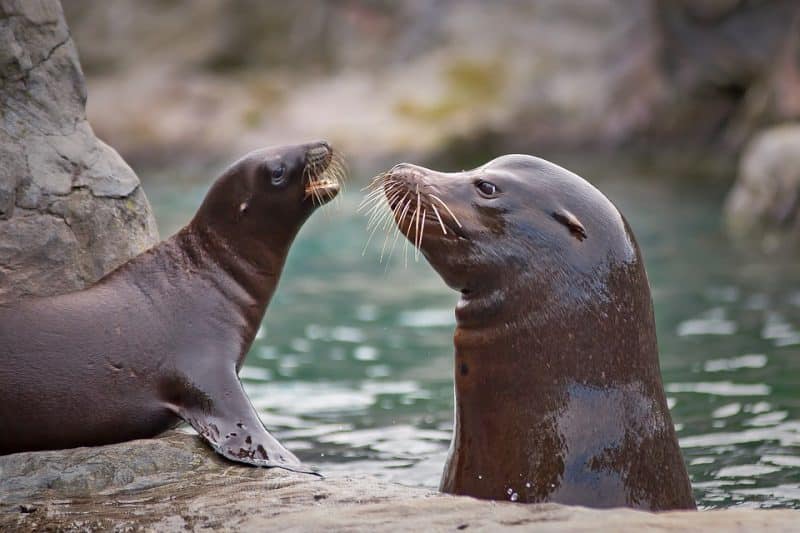
Surprisingly, seals can be found along the shores of New York! These marine mammals are present in the region from late fall until late spring, with the peak concentration typically occurring around April. Seals engage in a behavior known as “hauling out,” where they leave the water to rest on sandy beaches or rocks. This activity helps them regulate their body temperature, socialize, give birth, and molt.
Hauling out in groups provides seals with safety in numbers, helping them avoid predators. While up to five species can be observed locally, harbor seals, gray seals, and harp seals are the most commonly sighted in the area.
Their diet consists of fish, shellfish, and crustaceans, which play a crucial role, especially for nursing mothers during their 4 to 6 weeks with their pups.
Gray seals exhibit a “horse-like” appearance, particularly as adults. They may share areas with harbor seals and are capable of diving up to 1,500 feet for one hour. Gray seal pups are known for being vocal, aiding their mothers in locating them. Their diet includes various fish, squid, octopus, and crabs.
Harp seals, primarily an Arctic species, are occasionally present in small numbers in New York. Some sightings have occurred in New York City and farther up the Hudson River. Adult harp seals molt each spring while consuming small fish species like capelin and invertebrates. They are capable of impressive dives, reaching depths of up to 1,000 feet for 16 minutes.

Bottlenose dolphins, common dolphins, pilot whales, and Risso’s dolphins are frequently observed off the south shore of Long Island. Bottlenose dolphins are the most commonly sighted species, as they inhabit coastal waters closer to shore, including harbors and bays.
Dolphin sightings are most prevalent during the warm summer months when the water is teeming with life. These dolphin species, on average, have a lifespan of at least 40 years and sustain themselves by feeding on various species of fish and squid. Utilizing echolocation, all dolphins employ this sophisticated sonar system to locate and capture prey while living in social groups.
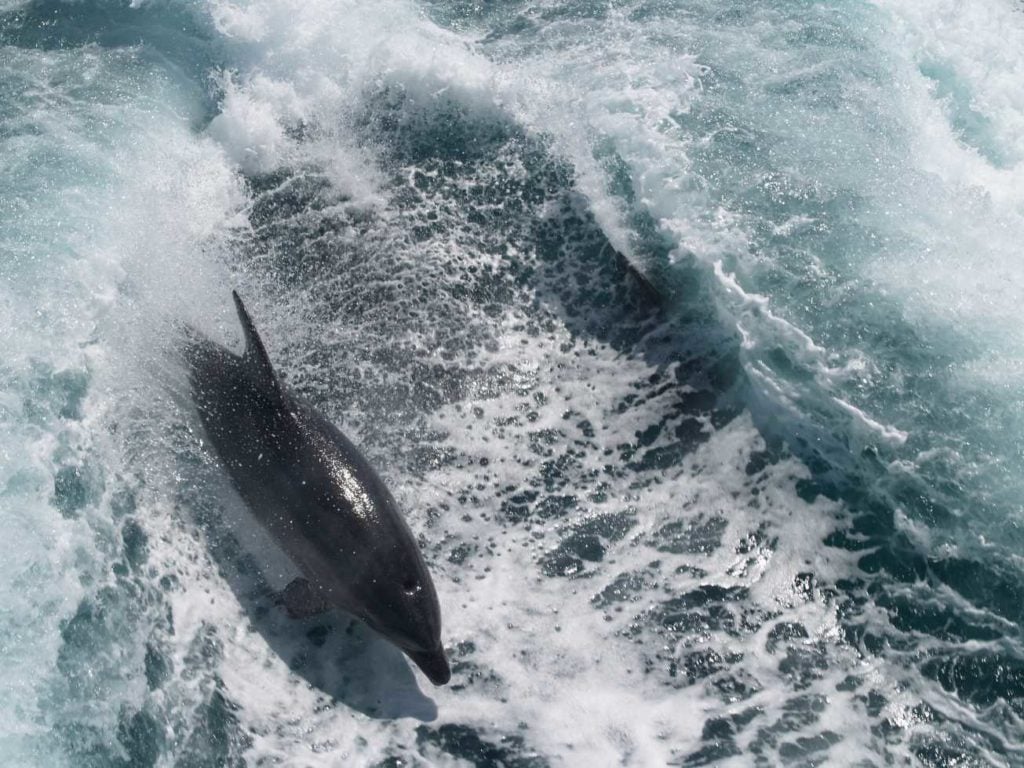
Bottlenose dolphins, known for their social nature, utilize unique click-and-whistle signatures to identify individuals within the group. Pilot whales, the second-largest species of dolphin, are commonly found near the shelf edge in deep water and often form associations with other species. Risso’s dolphins lack teeth in their upper jaw and use suction to feed on squid, displaying scars on their bodies that accumulate with age due to teeth raking between individuals.
Harbor porpoises are the only species typically found in New York’s marine waters, frequenting bays, estuaries, and Long Island Sound. These porpoises average around 5 feet in length, weigh approximately 150 pounds, and have a lifespan of up to 24 years. They primarily feed on fish like herring and mackerel, as well as squid and octopus. Harbor porpoises are recognized as a Species of Greatest Conservation Need for the state, with seven porpoise species worldwide.
Raccoons
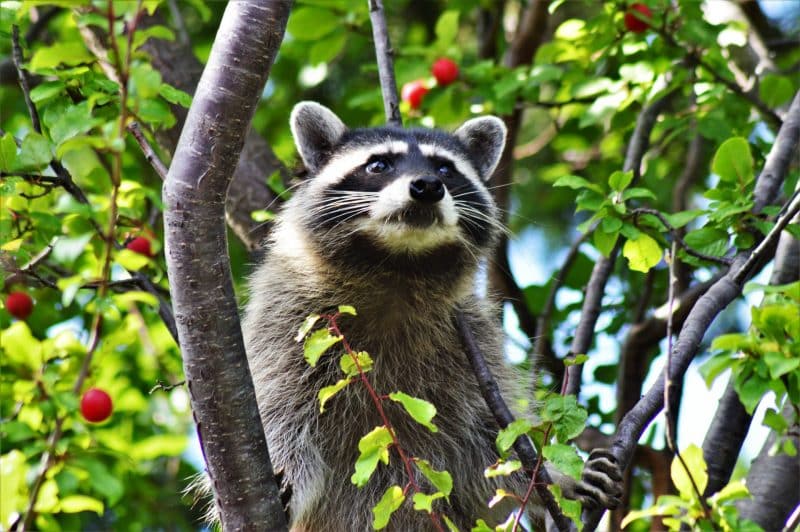
Raccoons, one of the most widespread mammals in New York State, demonstrate remarkable adaptability, thriving in diverse environments from remote forests to crowded urban areas. Interestingly, raccoon populations can be denser in large cities than in the wild, showcasing their versatility across different habitats and regions.
These “well-rounded” creatures, often exhibiting a plump appearance, feature reddish-brown to grey fur. With an average weight of 15 pounds, they are easily identifiable by the alternating rings on their tails and the distinctive black “mask” on their faces.
Raccoons play a significant role as furbearers in New York, contributing to income and recreation for hunters and trappers. Many individuals find joy in observing or photographing raccoons, but feeding them is unnecessary and unwise. Additionally, keeping raccoons as pets is both harmful to humans and raccoons and is considered illegal. Have you ever spotted raccoons in Central Park? They are indeed fascinating members of New York’s wildlife.
Raccoons are primarily nocturnal feeders, consuming a diet that includes fruit, nuts, berries, small animals, and insects. They are known to raid pet food, scavenge through garbage, and occasionally indulge in garden crops.
During late winter, female raccoons actively seek den sites. In April and May, litters comprising one to seven young are born. Approximately three weeks after birth, the young raccoons open their eyes and often make their presence known through mewing, twittering, or crying sounds. They nurse for about six weeks, after which they leave the den to accompany their mother until September or early October. It is during this period that they disperse and establish their own territories. The life cycle and behaviors of raccoons contribute to the rich tapestry of New York’s wildlife.
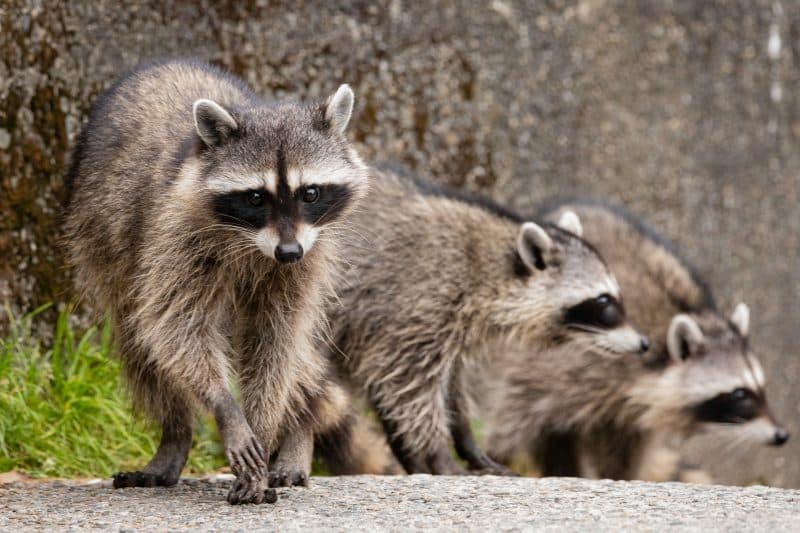
Raccoons are protected by law in New York, and possessing one without a license is prohibited. Licenses are not issued for keeping raccoons as pets, and hunting or trapping them requires a valid license. Homeowners and farmers without licenses can legally destroy raccoons causing property damage, but it is recommended to address the issue by eliminating food and shelter sources before resorting to lethal measures.
In some instances, raccoon populations may be very high, with densities ranging from 20 to 40 raccoons per square mile in rural areas and exceeding 100 per square mile in developed parts of the state, such as Long Island. To prevent raccoons from becoming a nuisance, people should avoid unintentionally providing them with food or shelter. This includes securing garbage, managing pet feeders, and addressing potential nesting sites.
Black Bears
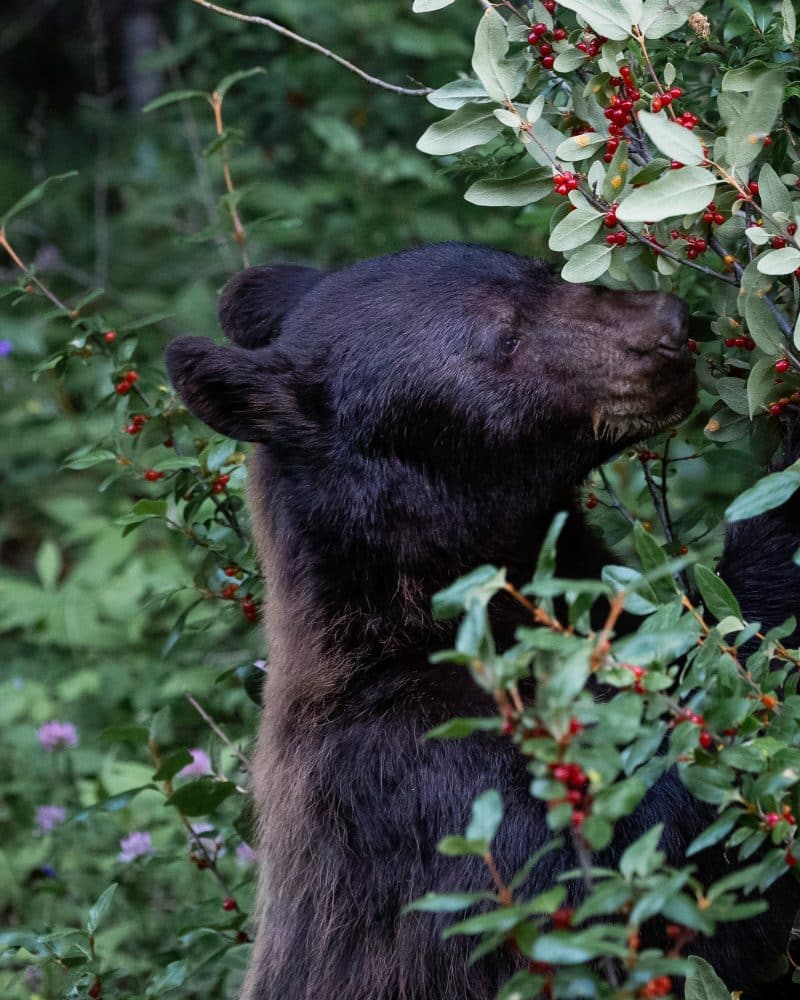
Wildlife in New York: Though rarely seen by most New Yorkers, black bears are valued by hunters, photographers, and wildlife watchers.
Many people enjoy just knowing that bears are present in New York State. For many, black bears symbolize wilderness and wildness, but increasingly, bears can be found in semi-rural environments, agricultural areas, and occasionally in urban centres!
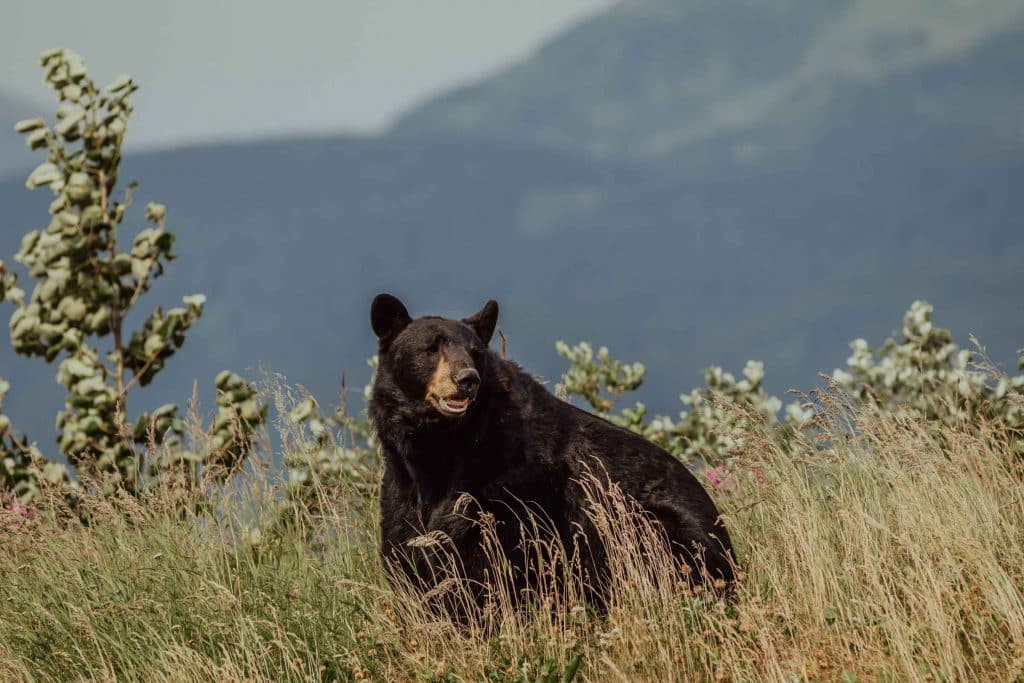
If you’re interested in visiting these animals, these are a few operators which may be able to assist you on this quest!
New York Black Bear Population Facts:
• Currently estimated at a minimum of 6,000-8,000 bears in areas open to hunting
• 50-60% inhabit the Adirondack region
• 30-35% inhabit the the Catskill region
• 10-15% inhabit the central-western region.
• Bears are now well established in many other areas, including the Tug Hill, Hudson Valley, and across the Southern Tier.
• Transient bears are routinely encountered throughout the Lake Ontario Plains, Mohawk Valley, and St. Lawrence Valley.
• Except Tug Hill, these other areas include a more significant proportion of agriculture or have higher human densities. This makes them less suitable for bears due to the higher likelihood of human-bear conflicts.
Black bears are an essential and natural component of New York’s ecosystem. Whether you live or recreate in the bear country, please help maintain and protect the bear. At the same time, protect yourself and your property by not feeding bears and reducing bear attractants.
Moose
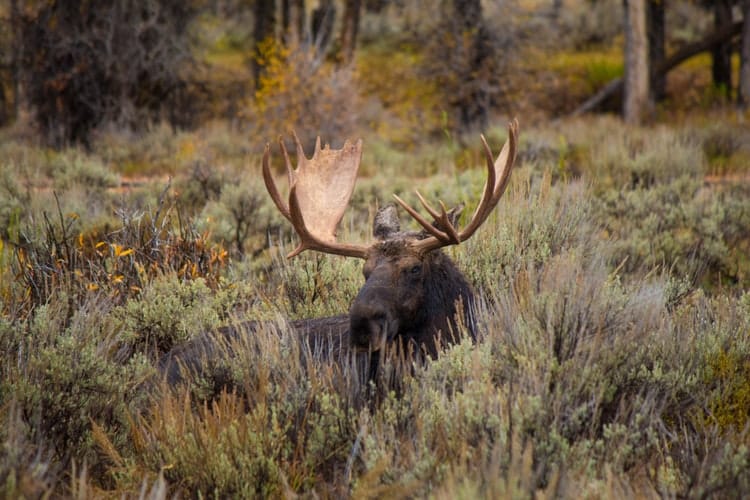
The moose holds the distinction of being the largest member of the deer family (Cervidae) and the largest land mammal in New York State. Bulls can weigh between 600 to 1,200 pounds, standing up to 6 feet tall at the shoulder, while cows typically weigh between 500 to 800 pounds. Both sexes feature long, grayish-white legs, dark brown or black bodies, and a distinctive flap of skin beneath the throat referred to as a bell.
Mature bulls possess significantly larger bells compared to cows and younger bulls. Cows have light brown faces with a white skin patch under their tails, while bulls exhibit dark faces and lack the white patch. Antlers, a feature exclusive to bulls, start growing in March or April, regrowing annually. On mature bulls, antlers can span a width of more than 5 feet and are shed from November through January.
Moose are typically found in boreal forest areas across the Northern Hemisphere. In North America, their range extends from Alaska to the Atlantic Ocean, and south into the Rocky Mountains, northern Great Lakes, and the Northeast. In New York, the majority of moose are concentrated in the northeastern part of the state, particularly in the Adirondack Mountains and the Taconic Highlands along the borders of Massachusetts and Vermont.
Moose are primarily browsers, consuming the leaves, twigs, and buds of both hardwood and softwood trees and shrubs. An adult moose has a daily diet that ranges from 40 to 60 pounds of browse.
Preferred plant species in their diet include willows, birches, maples, balsam fir, viburnums, aspen, and mountain ash. During the winter, moose may resort to stripping and eating the bark from small trees, particularly maples and aspen.
In the summer, moose extensively feed on aquatic plants found in ponds and wetlands. They wade into the water, reaching beneath the surface to graze on plants. Additionally, these wet areas serve as refuges where moose can escape biting insects and hot weather.
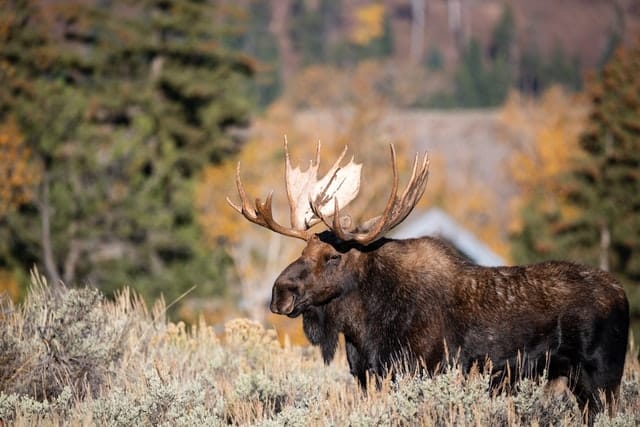
Optimal moose habitat is characterized by a diverse landscape, including upland mature mixed forests, open areas resulting from burns or logging, and wetlands. The regrowth of browse species after events like fires or clearcuts provides the nutritious food in large quantities that moose require. Small clear-cuts with some retained softwood cover are preferable to large clear-cuts exceeding 100 acres.
Several factors contribute to moose fatalities:
- Predators: Black bears are significant predators of moose calves less than nine weeks old, and occasional calf predation by coyotes may occur. Adult moose in New York State do not have natural predators, although wolves serve as their main predator in other regions.
- Parasites: Moose are vulnerable to a parasite called brainworm, which infects the nervous system and often leads to death. Other parasites like liver flukes and lungworms can weaken moose, making them susceptible to secondary infections. Although winter ticks, a common cause of mortality in other states with higher moose densities, have not been documented in New York, they spend three life cycles on an individual animal, feeding on its blood during each cycle.
- Vehicle Collisions: Vehicle collisions are a significant cause of moose mortality, especially in areas with high road densities. Due to their height, moose collisions often result in the animal coming over the hood into the windshield and onto the roof of the vehicle. Moose are most active from dusk to dawn, making them challenging to spot on the roadway during these times, and their coloration makes them less visible, especially when their eyes are above the reach of car headlights.
Summary of Wildlife in New York
I hope you enjoyed reading this Blog about Wildlife in New York! This is only the tip of the iceberg as there are many more amazing animals that I could’ve mentioned that live in New York!
Did you find this blog interesting? If you enjoyed this blog, you might be interested in blogs about the US or Hawaii in Wyoming.
Frequently Asked Questions (FAQs)
Yes, there is wildlife in New York City. While urbanized, the city still supports various wildlife species. Some common examples include raccoons, squirrels, pigeons, and various bird species. Additionally, seals and dolphins can also be found in the waters around New York City.
New York has a diverse range of wildlife due to its varied landscapes. Some notable wildlife species include white-tailed deer, black bears, coyotes, moose (mainly in certain regions like the Adirondacks), raccoons, and a variety of bird species.
Several animals are famous in New York due to their significance in the state’s ecosystem and culture. Black bears, white-tailed deer, bald eagles, coyotes, and raccoons are among the well-known and frequently discussed wildlife species in New York.
Yes, there are several predators in New York. Some notable predators include coyotes, black bears (especially on young moose calves), and various raptor species like bald eagles. Wolves were historically present in New York but are now considered extirpated (locally extinct).
- 5 Best Places to See African Wild Dogs - April 24, 2024
- Best Places to See Giant Pandas - April 23, 2024
- Sea Snakes: A Complete Guide - April 23, 2024




